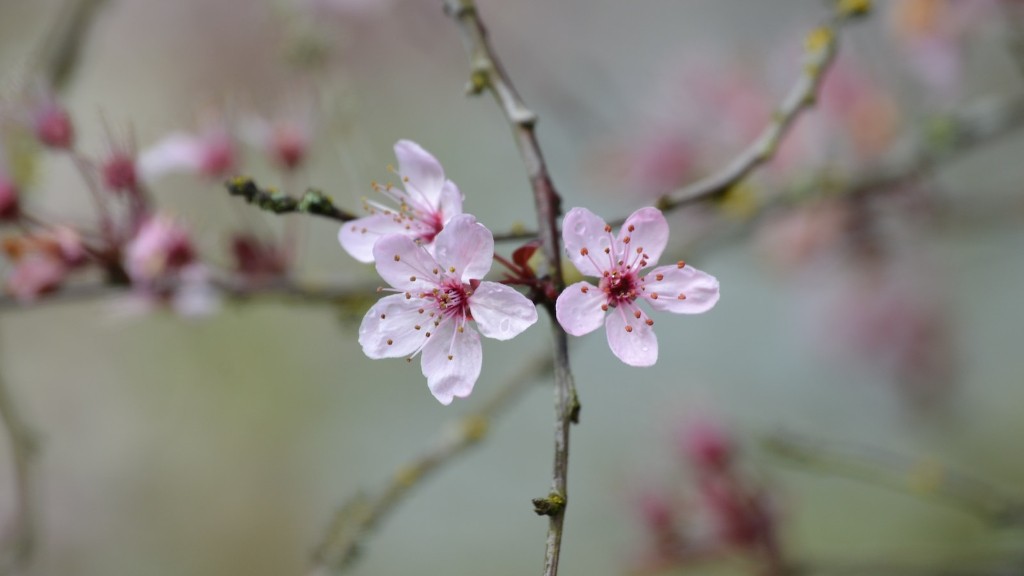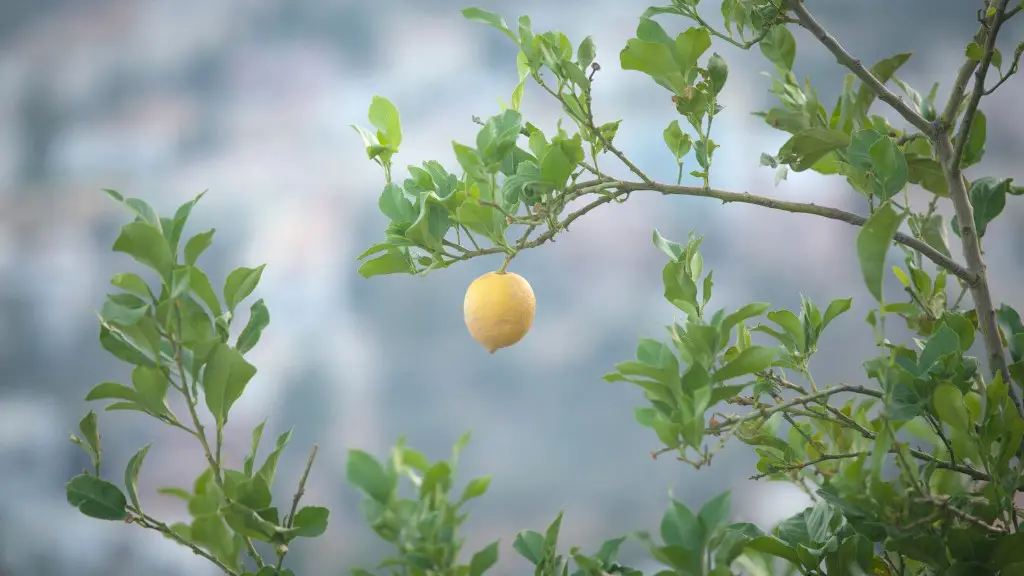Cherry trees are a popular fruit in many countries and are widely grown for their delicious, juicy fruit. But did you know that it is possible to grow a cherry tree from a pit? This simple and easy-to-follow guide will show you how to grow a cherry tree from a pit.
First, let’s look at the basics of growing cherry trees from pits. To begin, you will need to choose the right pit, since not all pits will sprout into a tree. In fact, many cherry pits don’t even contain viable seeds inside them. However, if you want to give it a try, here are some basics about which pits are more likely to grow into a tree.
It is important to note that most cherry pits will not germinate unless they come from a self-pollinated or pollinated tree. The cherry pits should be taken from the ripest cherries that were picked from a healthy, pest free tree. The pit should also be relatively undamaged and not too dry.
Once you have a viable pit, the next step is to get it ready for planting. To do this, you will need to soak the pit in water overnight. This allows the pit to absorb water, which helps to soften the outer layer and make it easier to break the seed coat and sprout a seedling. After soaking, you can pat the pit dry and place it in a small bowl of soil.
The last step is to give your cherry pit adequate light, water, and nutrients to germinate. First, place your seedling in an area with indirect sunlight and adequate drainage, such as a planter box. Make sure to keep the soil moist but not soggy, and provide adequate nutrients with a time-release fertilizer. With the proper care, your cherry tree should begin to take root and grow.
Planting the Cherry Tree Seedling
When the seedling has grown 3-4 inches, it is ready to be transplanted into the ground. Begin by choosing an area with full sun, well-draining soil, and a pH between 6.0 and 7.0. Plant the seedling at a depth of about two inches, making sure to fill around the hole with plenty of soil. Water the seedling after planting and monitor it for signs of disease or insect damage.
Once your cherry tree is planted, the care that you provide will go a long way in determining its success. Keeping the soil loose and moisture at an adequate level is especially important in the early years of your tree. Fertilizing on a regular basis will also help to ensure that your tree gets the nutrients it needs. Pruning is also necessary to keep your tree healthy and productive. This should be done in the spring before the tree begins to break dormancy, as well as in the fall after the harvest.
Harvesting the Cherries
When your cherry tree has reached maturity, which can take about 4-5 years, it will begin to produce fruit. Harvesting cherries can be a tedious process, as you will need to inspect each cherry for signs of damage or pests. It is also important to pick at the right time, as cherries will ripen at different times and you want to make sure to get the sweetest ones. In order to avoid wasting any of the cherries, it is also wise to look for another use for your surplus fruit, such as making jams or pies.
Caring For a Mature Cherry Tree
Once your cherry tree is mature, it will require little maintenance apart from general care. To ensure that the tree remains healthy you should regularly inspect it for signs of disease or damaged branches. Pruning is also necessary to keep the tree in shape and encourage new growth. Additionally, fertilizing your tree on a regular basis will help to keep it healthy and productive.
Protecting Your Cherry Tree
Finally, it is very important to protect your cherry tree from pests and disease. Be sure to inspect your tree regularly for signs of disease or insects, and take steps to control them if necessary. This may include the use of fungicides, insecticides, or other methods of pest control. You should also be sure to keep weeds under control, as these can rob your tree of essential nutrients and moisture.
Diagnosing and Treating Cherry Tree Diseases
The most common issues that can affect a cherry tree are various fungal diseases. Symptoms of these diseases range from yellowing or browning of leaves to wilting or premature leaf drop. To diagnose a fungal disease, look for black, brown, or white spots on the leaves or stems. In order to treat a diseased tree, the disease must first be identified, then the proper treatment can be applied.
Common Pests of Cherry Trees
Various insects and pests can inflict damage on cherry trees. Aphids, mites, and caterpillars can all cause damage to the leaves and fruit of cherry trees.
In order to prevent an infestation from occurring, it is important to regularly inspect your tree for signs of pests. If you find any, take steps to control the pests using organic insecticides or pesticides.
Risks of Growing a Cherry Tree
Growing a cherry tree from a pit comes with its own risks. The biggest risk is that the pit may not contain viable seeds, which would result in the tree not growing properly. Additionally, the tree may suffer from disease or pest infestations, which could result in poor productivity or even death of the tree.
It is important to keep in mind that growing a cherry tree is not a sure thing, and there is no guarantee that it will produce fruit. However, if you take the proper steps to care for your tree and ensure that it receives the nutrients it needs, there is a good chance that it will live a long and productive life.


